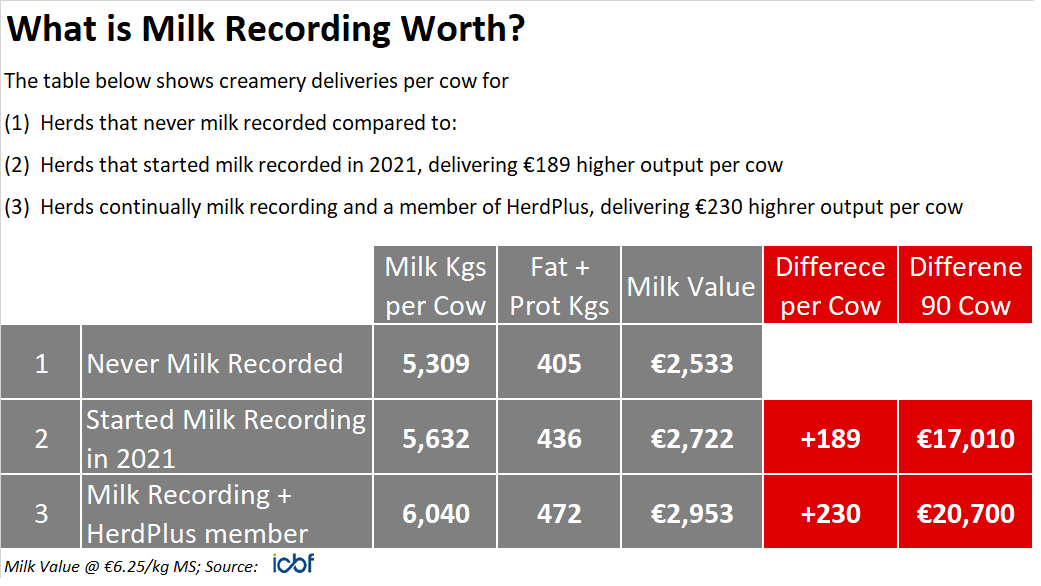Milk recording on dairy farms has been increasing over the last number of years, with this year seeing a 12% increase.
The new regulations around selective dry cow therapy and the benefits that milk recording offers to farmers are factors behind the increase this year.
Some of these benefits include the ability to identify a herd’s best and worst cows, economic breeding index (EBI) reliability and more.
The information that milk recording cows offers farmers is invaluable.
Output/cow
According to Irish Cattle Breeding Federation (ICBF) data, farmers that have been milk recording their cows for a number of years have an increased profitability.
Based on a value of €6.25/kg of milk solids, according to ICBF, there is an increased profit/cow of €230 – this equates to €20,700 on a 90-cow farm.

This increase in profits is most likely due the information being offered to farmers which can then be used to make breeding decisions.
Farmers that are milk recording can see the performance of each individual cow and then make breeding decisions around that information.
Without this information, it is impossible to tell what a cow is actually producing.
It is also important to note that a cow with a high cell count has a hampered production.
A fourth-lactation cow milking 25L/day, with a somatic cell count (SCC) of 300,000 cells/ml is losing 2L/ day.
The data shows that recording cows is important and that the information offered to farmers can greatly improve farm profitability.
Milk recording
The latest data from ICBF shows that there has been a 10.6% increase in 2022 compared to 2021.
In 2022, so far, there has been 1,028,310 cows recorded, compared to 930,066 cows in 2020 – an increase of 98,244.
A lot of this can be attributed to the changes in the antibiotic regulations which came into effect this year.
